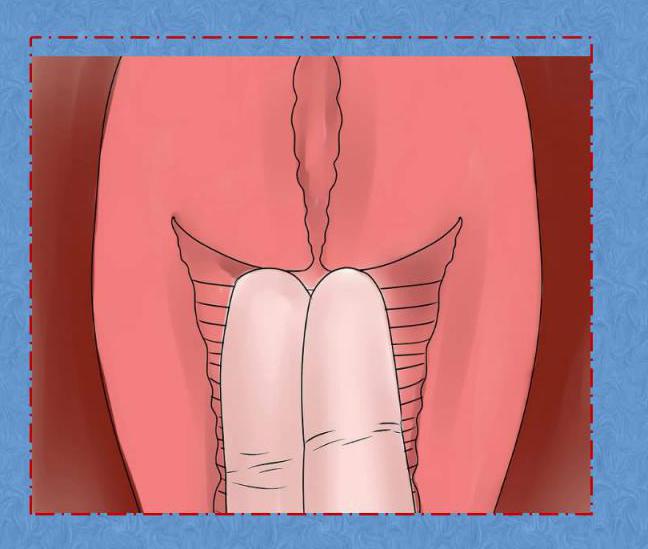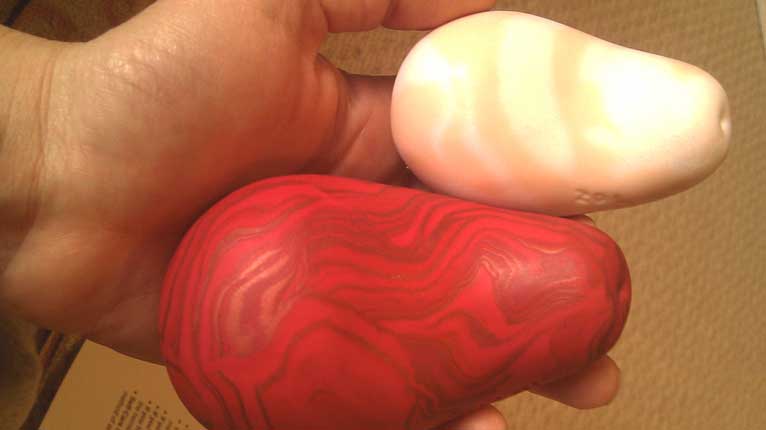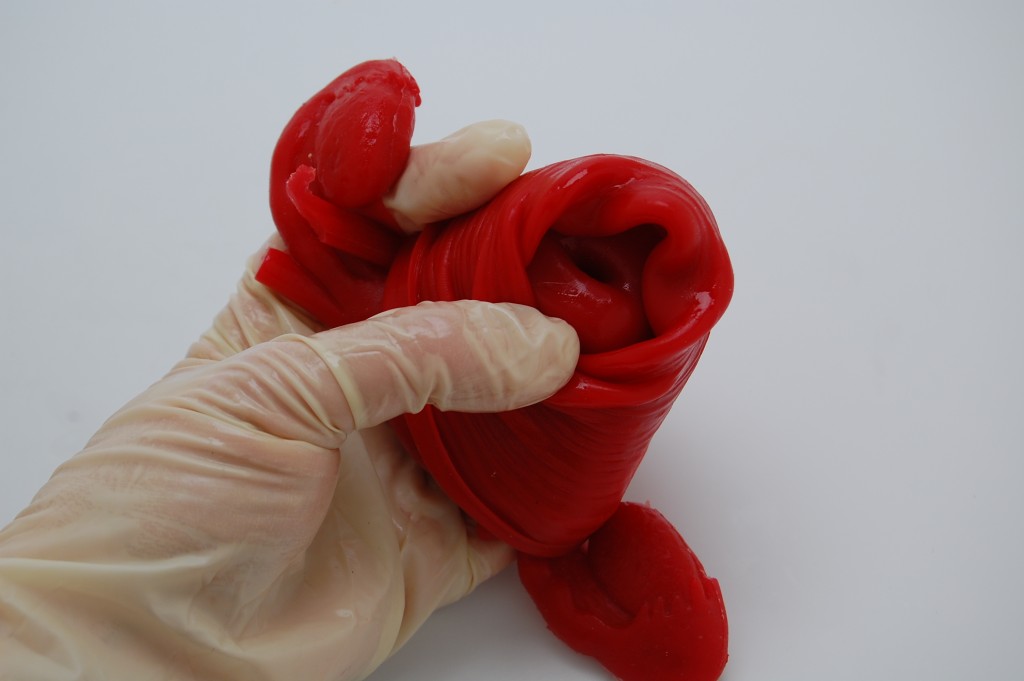Learning to check the cervix is easier than you think. This may sound like something only doctors and nurses are teaching, but there are no reasons why a woman cannot find out where the neck is and how to notice changes in her position. Why, in general, check the position of the cervix?
If you are trying to get pregnant, this may provide key information. You can detect ovulation by tracking cervical changes. The cervix goes through subtle changes throughout the menstrual cycle. You can determine when your body is most prepared for conception or ovulation has already passed, just by checking the position of the cervical condition. It also changes during late pregnancy and childbirth. The neck is shortened, thinned and expanded during childbirth. It transforms from tightly closed and tight at the beginning of pregnancy to 10 centimeters in width and is completely erased (or thinned) when the baby is born. You can notice these changes yourself.

More on Menstruation
Every month there is a complex interaction between the pituitary gland in the brain, ovaries and uterus. Signals caused by hormones are transmitted throughout the body to prepare it for a possible pregnancy. An egg is produced, the uterine mucosa thickens, hormones prepare the vagina and cervix for receiving and supporting sperm. If pregnancy does not occur, the thick mucous membrane of the uterus is discarded along with the egg, this is the period. Then the cycle begins anew. The first day of the cycle is the first day of your period.
After menstruation, the inner membrane begins to grow again to become a thick and loose "nest" in preparation for a possible pregnancy. On the 14-15th day (for most women), one of your ovaries will release an egg, which eventually ends up in your fallopian tube (called ovulation). On the 28th day (for most women), if you are not pregnant, the uterine lining begins to be rejected. Blood, along with exfoliated uterine endothelial cells make up normal discharge during menstruation. Color can vary from dark scarlet to brownish brown.

The structure of the female reproductive system
Internal reproductive organs in women include:
- The vagina is the channel connecting the cervix (lower part of the uterus) with the external part of the body. It is also known as the birth canal.
- The uterus is a hollow pear-shaped organ that is the "home" for the developing fetus. The uterus is divided into two parts: the cervix, which is the lower part that opens into the vagina, and the main organ of the uterus, called the body or body of the uterus. The housing can be easily expanded to hold a developing child. A channel through the cervix allows sperm to enter and menstrual blood to exit.

- The ovaries are small oval glands located on both sides of the uterus. The ovaries produce eggs and hormones.
- Fallopian tubes: These are narrow tubes that attach to the upper part of the uterus and serve as tunnels for the egg from the ovary to the uterus. Conception, fertilization of the egg with sperm, usually occurs in the fallopian tubes. Then the fertilized egg moves into the uterus, where it is implanted into the mucous wall.
What is the cervix before menstruation to touch?
Before the egg ripens, the cervix rises slightly, becomes softer and slightly opens. A woman can feel these signs of ovulation herself, not excluding transparent mucous secretions. Immediately at the time of ovulation, the female organ becomes even more friable, and the channel, accordingly, opens wider. This creates favorable conditions for the passage of sperm. In the case when conception has not occurred, after a few days the body prepares for menstruation. The cervix at this point becomes harder and more elastic, and the cervical canal, in turn, closes. About a day before menstruation, the location of the uterus changes from slightly elevated to lowered, and the elastic neck softens.
Below in the photo - the cervix before menstruation. It becomes firm to the touch in a few days.

Self diagnosis
Now that a woman knows which uterus feels before her menstruation, she is able to independently determine whether conception has occurred or whether she should prepare for critical days.
Self Examination Technique
Before starting, you first need to take care of hygiene. Since the whole procedure will be done by hand, they must be thoroughly washed. It is desirable that there is no manicure on the hands with excessively long nails, in order to avoid damage to the mucous membranes, as well as manicure without decorative elements (rhinestones, beads, etc.), since at any time they can come off the nail plate and remain in any parts of internal organs, which may lead to not the most favorable consequences. So, having decided on the hygienic state, you should proceed to the choice of a pose that is convenient for examination. For each woman it is completely individual.
The most successful positions:
- sitting on the toilet;
- squatting;
- lifting one leg to an elevation, such as a chair.
With a finger, one or two, the cervix is examined by touch.
Step-by-step instructions for checking the cervix
How to understand where the cervix is located? This can be done by studying simple patterns of the structure of the uterus. If you imagine that the vagina is a corridor, then the cervix is the door at the end. While your vagina has a kind of spongy structure that is inferior to pressure, the cervix looks like a hard round dimple.
Insert the index or middle finger into the vagina and slowly slide it to the cervix. You will feel it, because it is very different from the vagina. If you are not close to ovulation, you should easily find the cervix. If you have ovulation, the cervix may be higher in your body and more difficult to access.
Vaginal infections
Vaginal infections occur when bacteria, fungi, or viruses grow in and around the vaginal area. Anything that lowers the acidity of the vagina can cause a vaginal infection, while some other infections are sexually transmitted. No one is safe from them.
What are some causes of vaginal infections?
Some types of bacteria live naturally inside the vagina. They produce acid, which helps keep the environment at a certain pH level in order to help the body fight infections. However, hormonal changes and even using soap to cleanse the genital area can alter the acid level in the vagina. This can lead to the fact that bacteria that live naturally inside the vagina, which usually do not cause problems, can begin to multiply randomly and cause harm. A foreign body, such as a forgotten swab, can also stimulate bacterial growth and cause infection. This can lead to life-threatening complications known as Toxic Shock Syndrome, but this usually rarely happens. Vaginal infections can also be caused by unprotected intercourse.
What should be the cervix before the menstruation to the touch?
There are three changes that you feel when checking the cervix. Firstly, the position of the cervix is high, medium, or low. As you approach ovulation, the cervix moves up and back. It can be so high that you cannot get it.

The article presents a photo of the uterus. To the touch before menstruation, it has a dense structure.
Estrogen softens the tissue of the cervix, making it softer when the body is most prepared for conception. Some say that to the touch it is somewhat reminiscent of the tip of the nose when you are “not fertile,” and like the hardness of the lips when you are “fertile.”
Is it open or closed? The cervix will be ajar shortly before ovulation. The hole is tiny - no thinner gap. It will open again immediately before and during menstruation. However, during this period, the cervix will be lower (and not higher, as before ovulation).

Above is a model (photo) of the cervix. Before menstruation, the organ becomes hard to the touch.
If the neck is always slightly open, do not worry. Especially if you have ever given birth (which may include a miscarriage). The hole just cannot completely close. As ovulation approaches, you can still notice a change in the height and softness of the cervix.
The cervix, which is tall, soft and open, is fertile. Low, hard and closed - such characteristics are not a fertile sign, and you probably are not ovulating yet, or you have already ovulated.
The cervix during pregnancy

In this case, the cervix is in the most elevated position in the vagina, and you can only feel it with your fingertip. The organ during this period is dense, solid, and the canal takes the form of a small flat gap.
Why are gynecologists against self-examination?
Due to the fact that many women know what the uterus should be to the touch before menstruation, they try to probe the body on their own. But still, this should not be done.
Firstly, if hygiene is not observed, there is a risk of infection, because through the hole microbes can enter the uterus itself and cause inflammation.
Secondly, on different days of the menstrual cycle, the position of the uterus and its neck can change. The neck can both lower and slightly rise. Therefore, not having additional information, a woman can injure her neck. And of course, no matter how enormous experience the girl has, nevertheless, for accurate results, especially if you suspect a pregnancy, you need to contact a gynecologist, an experienced specialist who has all the necessary knowledge and modern equipment for examination.